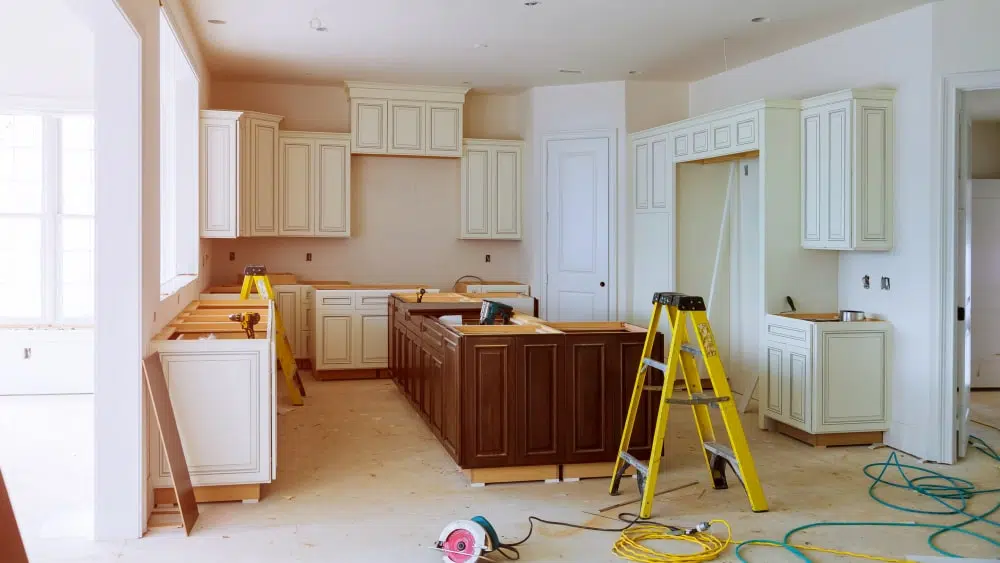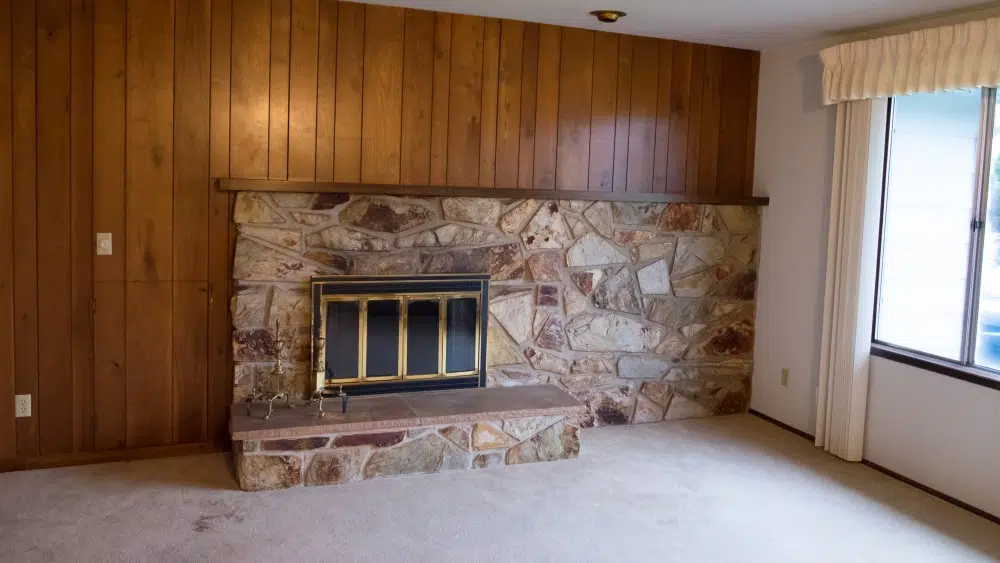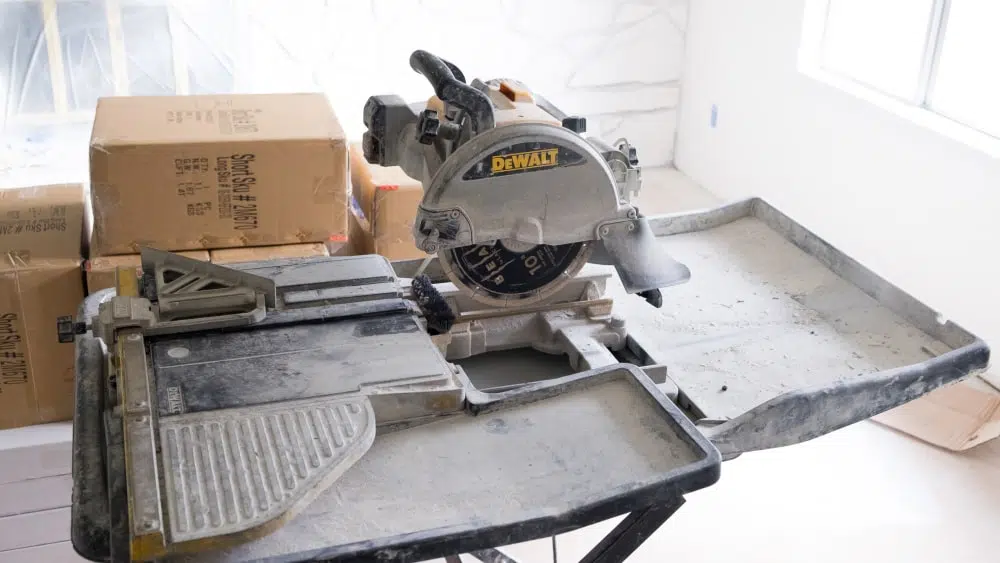
If your home requires some major TLC, you may need to decide between a large-scale home renovation or tearing down your property to start with a blank slate.
This is a big decision that comes down to a handful of careful considerations depending on your house, your location, your budget, and your living situation. Renovation is the obvious choice when you are simply looking to spruce up portions of your home instead doing of a complete overhaul, and by the same token, gutting the property may be your best bet due to extensive water damage or a crumbling foundation. And rebuilding your home also can give you the opportunity to get the latest in design, materials, and layout — on top of that brand-new foundation.
In most cases, though, your decision is not so clear-cut. To help you determine which path is right for you and your home — renovating or tearing down and rebuilding — here are eight questions to help guide you in your decision-making process.
1. What condition is your home in?
Are you dealing with a home that’s in disrepair, or is it in good shape?
If the bones of the building are still reliable, you can stick to a renovation but if you’re grappling with a decades-old house that’s on its last legs, you may be advised by a structural engineer or a home inspector to level the property so you can give it a new lease on life.
You can tell you’re dealing with severe issues if there are cracks on your interior walls, your walls aren’t perfectly straight anymore, or if your basement and crawl space are waterlogged after a stormy day or from a burst pipe. Check on the electrical, plumbing, and heating systems, too, as they may need a major upgrade throughout the home for both safety and code compliance.
If extensive damage is going on that’s verging on the unsafe, a tear-down and rebuild is the smartest way to go.

2. What changes do you want or need to make?
Are you dreaming of redoing your kitchen or living room, or do you want to expand or change the layout significantly?
When doing a renovation project, keep in mind that you’re leaving the core structure of the property in place. Working from your existing structure and foundation, you can replace the floors or remove interior walls for an open-concept layout.
However, you’ll need to demolish everything if you need to fix bad foundation issues or chronic dampness problems, or want to add a basement, for example.
If you’re planning on expanding the property extensively, such as building a multifamily structure on your plot of land, a full demolition will give you and your builder a fresh canvas on which to construct your new home precisely the way you’d like. Essentially, if the changes shift beyond the cosmetic, you’re more likely to swing in the direction of demolishing your home.
3. What is your budget?
How much you can afford to spend also can help you dictate which direction to take.
If you’re cash-strapped, renovations are a good choice because you can pay for projects bit by bit or room by room as you replenish your funds. On the other hand, demolishing your home and rebuilding it come with major price tags. All in, you’ll pay for tearing down your home and then rebuilding it over the course of a year or so.
This question requires some serious number-crunching to get the figures right. As you estimate your total costs for a renovation versus a rebuild, consider what construction steps you’ll have to take for each option and the associated costs.
It’s worth noting that you should add a contingency buffer to both estimates for unforeseen costs. Once you start tearing apart the walls or ceilings of your home, you may come across issues like asbestos, wood rot, and mold or structural problems that will complicate your renovation.
Factors that can affect the cost of a rebuild (and certain renos) include the age of your home, the size (which affects demolition costs), and building codes requiring you to update your home’s systems.
Check on what warranties are available for renovation work and a full rebuild. A tear-down and rebuild, being new construction, often comes with a lengthy warranty, which can give you peace of mind in the long run.
If you have a new construction home, check to see if your builders warranty will cover any costs. This is very unlikely, but still worth looking into.

4. Do you want to live in your home during construction?
Another consideration is your living logistics during construction. Most renovation projects can be completed while you’re still living in the home, but tearing down your home requires you to move out, at least for a few months, full stop.
For a rebuild, you’ll need to move your belongings to a storage unit and find a temporary home while your property is being demolished and then reconstructed. This is an added expense you’ll need to account for, along with a big inconvenience in some cases.
Even for a renovation, especially a major one, living in your home while it’s a construction zone can be tricky, especially if you have children and pets under your roof. You may end up having to move out, at least for portions of the renovation process.
Either way, consider which option best suits your family’s lifestyle and routine. For some families, affordability is the deciding factor, as finding a temporary sublet is out of their budget, while for others, moving out and finding a temporary home that’s close to the kids’ school and parents’ work is the solution.
5. Can you secure the required local permits for your project?
Whichever route you take, you or your builder will need to make sure your renovation or rebuild clears your local zoning laws and building regulations. Local zoning laws dictate the type, size, and location — even the height — of buildings on residential and commercial properties. Thus, your plans to extend your home or to demolish and build an entirely new home must get the green light from the local authorities. (Note, that includes a demolition permit if you go that route.)
Be sure you provide a clear blueprint for your renovation or reconstruction, along with an estimated schedule. Overall, home rebuilds are typically limited to the footprint of the original property so you can’t get away with replacing your small home with a mansion!
Check on your city’s approval process and its list of bylaws and regulations you’ll need to adhere to. Doing this homework may steer you in the direction of renovating if there are too many bureaucratic checkpoints to clear and limitations to work around with tearing down and rebuilding.

6. Does your property have historical value?
Crown molding, arched doorways, pocket doors with vintage doorknobs left in pristine condition — it’s hard to part ways with swoon-worthy historical home features. And it’s worth considering if you even want to. Historical homes often command a higher value if they’re kept in mint condition.
If you own a home with coveted historical features, check with a property appraiser before making any final decisions on what to do with your home. You may decide to renovate to preserve some of your home’s original details, instead of tearing it all down and rebuilding. Also be aware that if your home is considered historically significant, a proposed demolition could meet with opposition from local preservationists.
But don’t feel bad if the historical aspects of your home simply don’t charm you, especially if the home isn’t in sound condition anymore. In that case, tearing it down may be the better option.
7. Are you worried about sustainability?
If you’re an environmentally conscious homeowner, you may be worried about the environmental impact your renovation or rebuild may have on the planet.
As a rule of thumb, renovating your existing home is more sustainable than tearing it down to rebuild new. There are some exceptions, though: If your home is aging and leaking hot air in the winter and cool air in the summer, it may be time to rebuild with energy-efficient features throughout the property. You can ensure the home is properly insulated, with new energy-efficient lighting and appliances.
It’s worth paying attention to the changes happening around your neighborhood block, too. Is your property the only aging home on the street that hasn’t had a facelift in a decade, or would it stand out like a sore thumb with the revitalized look you have in mind for it?
You’ll want to make sure your changes are sustainable for you and for future homeowners, if you plan on selling in the future.
8. How much design work do you want to do?
Some people live for home décor and design, dedicating their spare time to taking their home to the next level, while others see it as a chore, only to be tended to on an as-needed basis.
Along with your budget, time considerations need to be factored into this equation too. A kitchen renovation will allow you to bring in all the design features and materials you’ve always wanted — but you’ll only to have to deal with that space. If you’re going down the road of tearing down and rebuilding your home, you’ll be undertaking a much larger commitment of being involved in every minute decision of your property’s redesign.
If, however, you have the passion, patience, and time to commit to a project of this size, rebuilding is an incredible opportunity to design the home of your dreams. Once your lot is returned to a clear space, you get to call the shots on everything from the style of the home to the layout and materials used.

Carmen Chai is an award-winning Canadian journalist who has lived and reported from major cities such as Vancouver, Toronto, London and Paris. For NewHomeSource, Carmen covers a variety of topics, including insurance, mortgages, and more.
 What is the No-Till Garden Method?
What is the No-Till Garden Method?